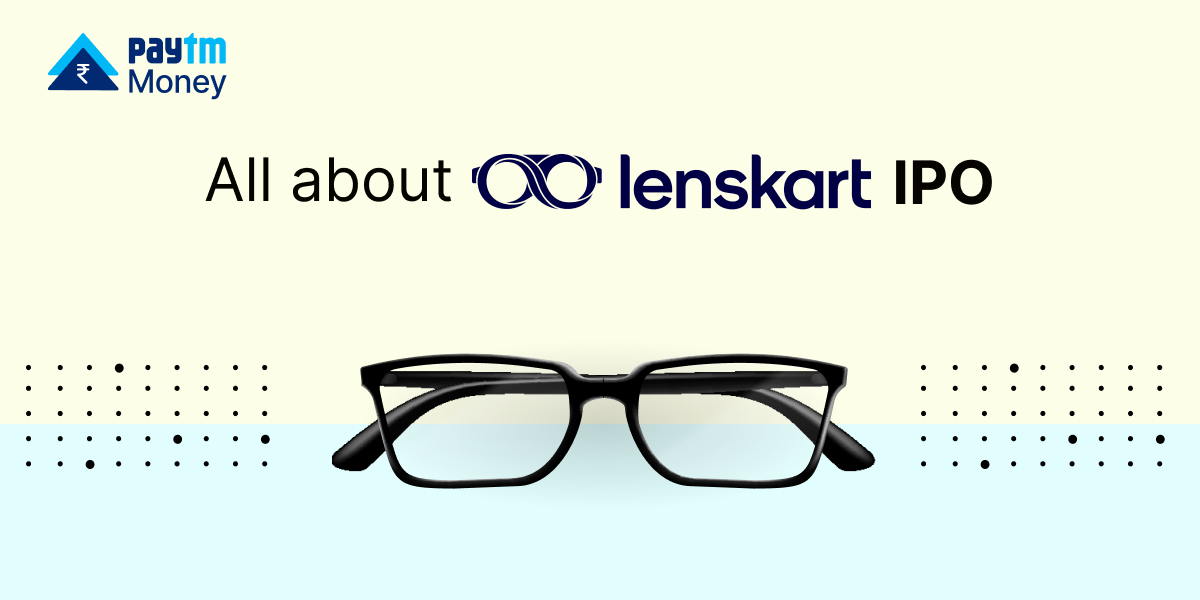What if you could own a slice of the system that powers every share trade in India? The IPO of National Securities Depository Limited (NSDL) offers you just that. NSDL is at the very core of how securities are held, traded, and settled in the capital markets. And now, it’s opening up to retail investors.
The ₹4,000 crore IPO opens on July 30, 2025, and is a 100% Offer for Sale (OFS)—which means the funds raised will go to existing shareholders who are selling their stake. NSDL itself will not receive any proceeds from this issue.
Let’s unpack what makes this IPO significant and what it means for you as an investor.
IPO details: A quick overview
| IPO Date | July 30, 2025-Aug 01, 2025 |
| Listing Date | Aug 06, 2026 (tentative) |
| Price Band | Rs760- Rs 800 |
| Lot Size | 18 shares and multiples thereafter |
| Total Issue Size | Rs 4000 crore approx. |
| Issue Type | Fully OFS issue |
| Listing At | BSE |
| Employee Discount | Rs 76/- per share |
What is NSDL?
National Securities Depository Limited (NSDL) is a SEBI-registered market infrastructure institution established in 1996. Depositories are institutions that hold your financial securities (like shares, bonds, mutual funds) in electronic form.
In India, there are two main depositories:
- NSDL – National Securities Depository Limited
- CDSL – Central Depository Services (India) Limited
Both are regulated by SEBI (Securities and Exchange Board of India) and form the core infrastructure of India’s capital markets.
What NSDL does?
- Converts paper share certificates into digital records (dematerialisation)
- Safely stores shares, mutual funds, bonds, etc. in Demat Accounts
- Ensures smooth settlement of trades on stock exchanges
- Supports services like e-voting, e-KYC, and account statements
Why NSDL IPO important?
This is your chance to own a part of India’s capital market infrastructure. NSDL sits at the heart of how securities are held, traded, and settled in the capital markets. Just like a bank holds your money, NSDL holds your shares and other securities in electronic form through what’s called a Demat Account. It keeps track of who owns what, ensures trades are settled properly, and makes corporate actions (like dividends or bonus shares) easy to manage.
Investing in NSDL offers you exposure to a market-leading institution, characterised by:
- Market leadership
- Diversified and growing revenue base
- Strong financials
- Regulatory oversight and good governance
- Robust growth opportunities driven by market expansion and technological innovation.
Who are NSDL promoters?
NSDL is a professionally managed company and does not have any promoter. NSDL’s largest shareholders are institutional bodies such as IDBI Bank Limited, National Stock Exchange of India Limited, and HDFC Bank Limited, among others. But none of them are classified as promoters.
Meet NSDL’s day-to-day management
The Managing Director & Chief Executive Officer is Sh. Vijay Chandok
NSDL also has several committees managing various company functions.
NSDL: Financial overview
| SUMMARY OF RESTATED CONSOLIDATED STATEMENT OF PROFIT AND LOSS | ||||
| (₹ in million) | ||||
| Particulars | As at March 31, 2025 | As at March 31, 2024 | As at March 31, 2023 | |
| Total Income | 15,351.87 | 13,657.05 | 10,998.14 | |
| Total Expenses | 10,841.40 | 10,093.92 | 7,899.35 | |
| Profit after Tax | 3,431.24 | 2,754.45 | 2,348.10 | |
| Basic and Diluted earnings per equity share of ₹2 each (₹) | 17.16 | 13.77 | 11.74 | |
Source: RHP
Basis of offer price
- NSDL was the first depository in India and pioneered the dematerialization of securities. Dematerialization replaced paper share certificates with secure digital records held in a demat account.
- The company has maintained a strong market position through continuous technological innovation and expansion of product offerings.
Financial Performance
Revenue Growth: Sustained increase in revenues from core depository services, banking services (mainly through NPBL), and IT-enabled database management services.
Profitability: Robust profit after tax (PAT), high PAT margins, and strong earnings per share (EPS) history.
Strong Net Worth: Consistent growth in net worth, with zero debt on the balance sheet.
Industry Position and Market Share
Market Leader: Leading position in India by number of issuers, number of active instruments, share of settlement volumes, and assets under custody.
High Entry Barriers: Regulatory requirements and technological infrastructure create significant entry barriers.
Risk Factors
Reliance on Securities Market: NSDL’s revenue is heavily dependent on trading activity and investor interest in the Indian capital markets. Any decline in investor participation or trading volumes due to macroeconomic, political, or other external factors could reduce their revenue and adversely impact financial results.
Technology and Cybersecurity Risks Reliance on IT Systems: The company’s operations depend on complex IT systems. Any system failures, cyber-attacks, or data breaches could disrupt services, result in legal liabilities, and damage the company’s reputation.
Stringent Regulatory Regime:
- NSDL operates in a highly regulated environment; non-compliance with SEBI, RBI, IRDAI, or other regulatory requirements may lead to penalties, restrictions, or revocation of approvals.
- NSDL has received multiple warning and deficiency letters from SEBI for delays and non-compliance, increasing the risk of future regulatory actions.
- Multiple outstanding legal, regulatory, tax, and statutory proceedings could impose financial or reputational costs.
Competitive Risks: Strong competition from CDSL and other market participants creates pressure on customer acquisition, technology advancement, and pricing.
Dependence on Depository Participants: Extensive reliance on the network of DPs and their service quality. Failure to attract or retain DPs or inability of DPs to serve clients effectively could harm growth and revenue.
Subsidiary Compliance: Subsidiaries like NSDL Database Management Ltd (NDML) and NSDL Payments Bank Ltd (NPBL) are subject to separate and stringent regulatory frameworks. Non-compliance or regulatory action at the subsidiary level can affect overall operations.
NSDL vs CDSL: Understanding India’s Depository Duopoly
|
Name of company |
Face value (₹ per equity share) (2) | Closing price as on July 22, 2025 | Total income (in ₹ million) | EPS (₹) | NAV per equity share (3) (₹) | P/E Ratio(4) | RoNW(5) | PAT (in ₹ million) | |
| Basic (1) | Diluted (2) |
||||||||
| Our Company* | 2 | NA | 15,351.87 | 17.16 | 17.16 | 100.27 | NA | 17.11% | 3,431.24 |
| Peers | |||||||||
| Central Depository Services (India) Limited | 10 | 1,714.70 | 11,992.82 | 25.2 | 25.2 | 84.23 | 68.04 | 29.90% | 5,263.26 |
Source: RHP
1. Market Leadership
- NSDL dominates the market in terms of the number of issuers, active instruments, and value of assets under custody.
- The company enjoys a significant market share in the Indian capital markets, with a broad network of Depository Participants and active demat accounts.
2. Robust and diversified business model: NSDL’s revenue streams are diversified across:
- Core depository services (demat accounts, settlements, corporate actions),
- Banking services through NSDL Payments Bank Limited (NPBL),
- IT-enabled services and e-governance solutions offered by NSDL Database Management Limited (NDML).
3. Strong financial performance and profitability
- The company has demonstrated consistent revenue growth, profitability, and strong return ratios.
- It maintains a debt-free balance sheet with strong net worth and cash flows, underscoring financial stability.
4. Growth prospects
- India’s capital markets are expected to continue growing, with increasing penetration of dematerialized securities and rising retail investor participation.
- NSDL is well-positioned to benefit from these trends given its infrastructure, brand, and scale advantages.
5. Technology-driven innovation and expansion: NSDL invests continuously in technology, including:
- Blockchain-based solutions,
- Digital KYC platforms,
- E-voting and instant pledging services,
- Expansion into digital banking and payment systems through NPBL.
6. High-entry barriers and competitive moat:
- The company benefits from significant entry barriers due to regulatory approvals, technological infrastructure, and network effects.
- Continual innovation and strong relationships with Depository Participants create a robust competitive moat.
The Bottom Line
The NSDL IPO isn’t just another listing—it’s a chance to invest in the very infrastructure that keeps India’s capital markets running smoothly. With a strong financial track record, market leadership, and technology-driven growth, NSDL presents a compelling long-term story. Of course, it’s important to weigh the risks – especially regulatory scrutiny and competition – but for many investors, this could be a rare opportunity to own a slice of India’s financial backbone.
Is the NSDL IPO a buy for you or are you staying on the sidelines?
By Manish Shah, SEBI Registration No: INA000016180
Source: RHP
Disclaimer: Investments in the securities market are subject to market risks, read all the related documents carefully before investing. Registration granted by SEBI, enlistment with BSE and certification from NISM in no way guarantee performance of the Research Analyst or provide any assurance of returns to investors. Paytm Money Ltd SEBI Reg No. Broking – INZ000240532, Depository Participant – IN – DP – 416 – 2019, Depository Participant Number: CDSL – 12088800, NSE (90165), BSE (6707), SEBI reg No. Research Analyst – INH000020086. Regd Office: 136, 1st Floor, Devika Tower, Nehru Place, Delhi – 110019. For complete details, please visit : https://www.paytmmoney.com






